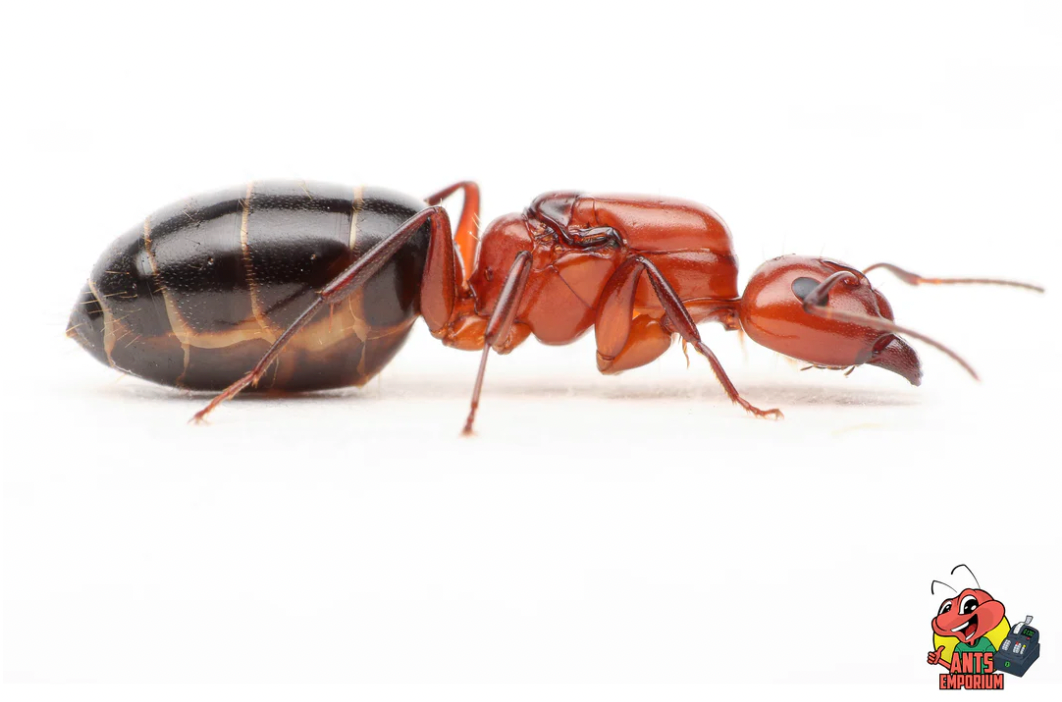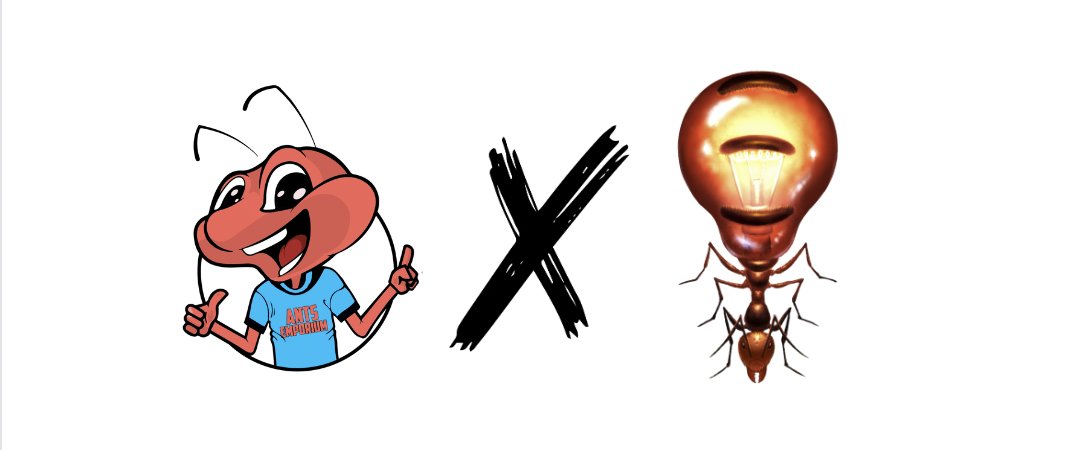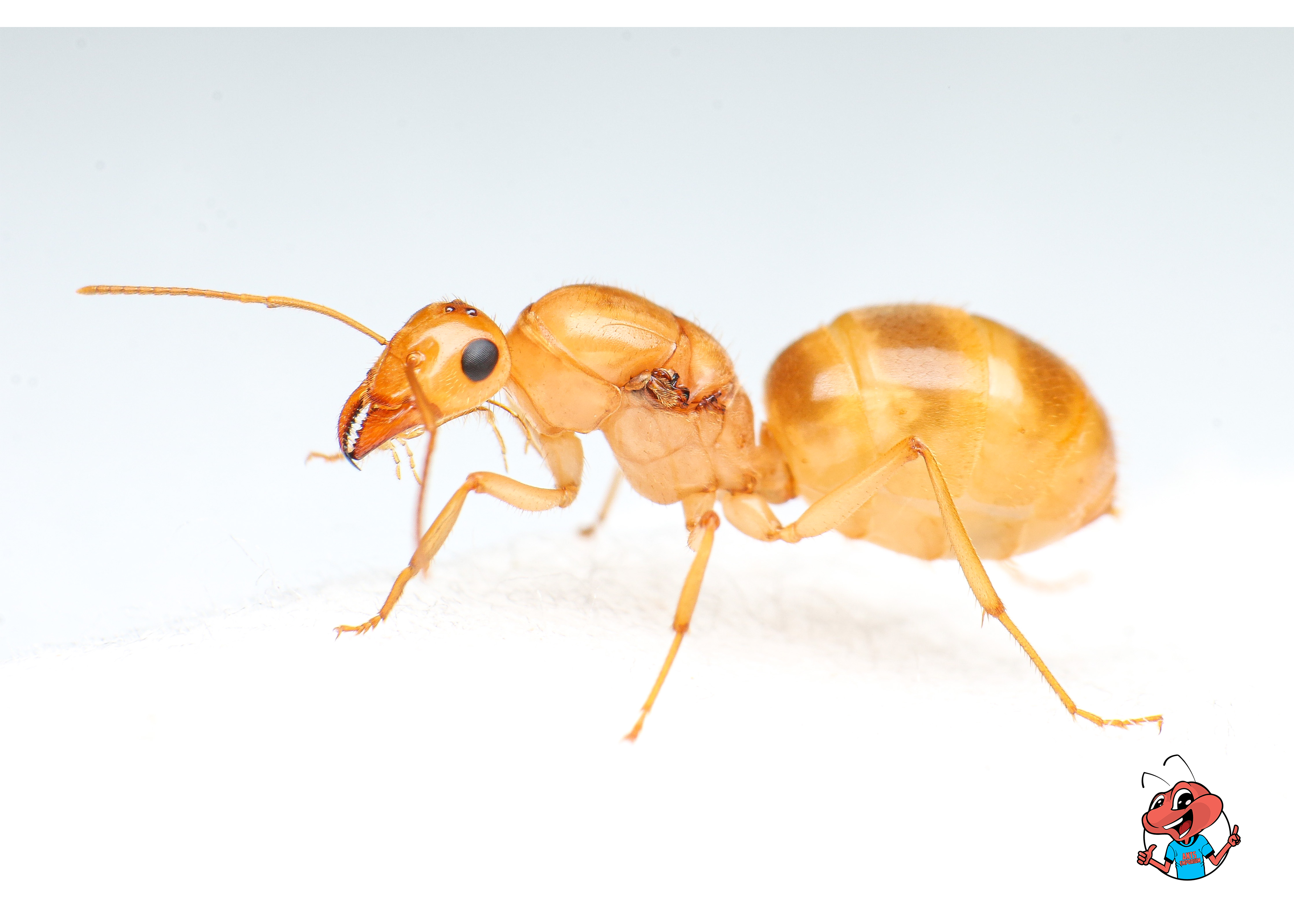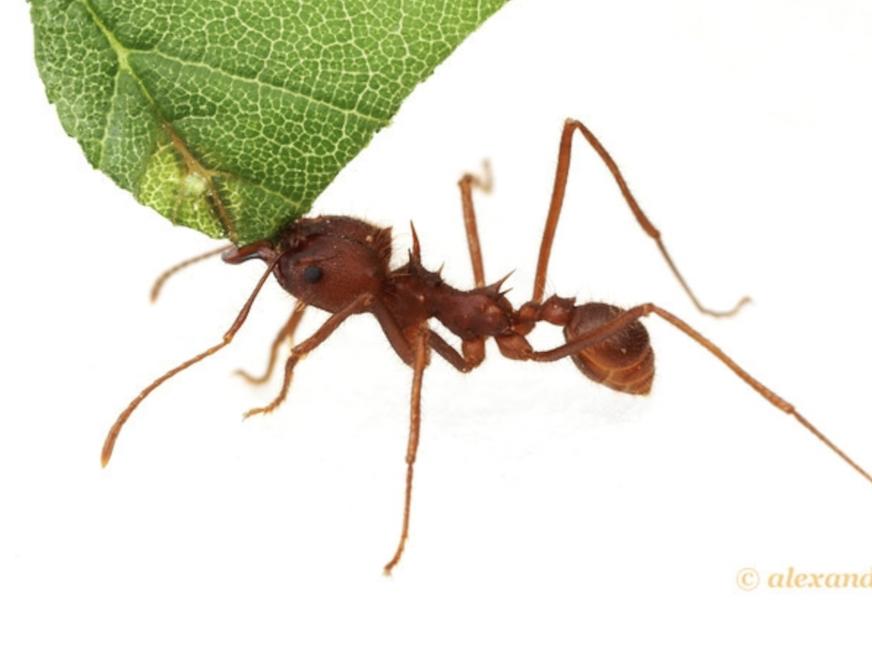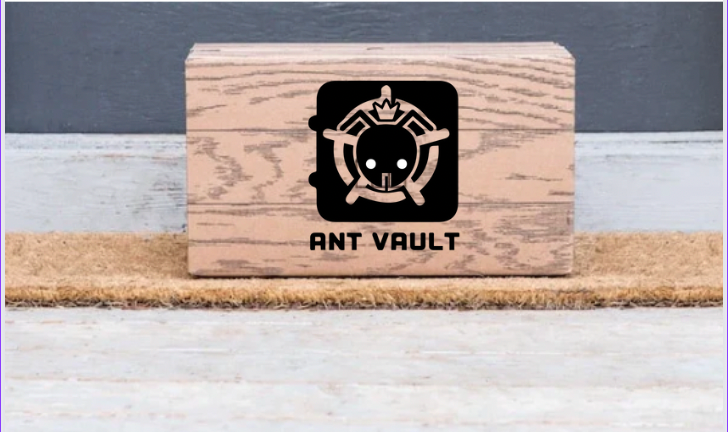Camponotus discolor
Camponotus discolor
Camponotus discolor, also known as the Mini Ruby Carpenter Ant, is a species of ant native to North America. If you have a colony of Camponotus discolor ants that you are caring for, here are some guidelines to keep in mind:
-
Habitat: Camponotus discolor ants prefer to live in wooded areas and build their nests in rotting logs or stumps. In captivity, they can be kept in a formicarium, which is a container designed specifically for ants.
-
Temperature: Camponotus discolor ants prefer temperatures between 20°C to 28°C (68°F to 82°F). You should avoid exposing them to extreme temperatures.
-
Humidity: These ants require a moderate level of humidity, which can be maintained by providing a water source such as a water tube or a sponge soaked in water.
-
Feeding: Camponotus discolor ants are omnivores, and their diet should include a combination of insects, fruits, and sugar water. Insects can be fed live or pre-killed, but it's important to avoid feeding them insects that have been exposed to pesticides.
-
Cleaning: Camponotus discolor ants produce waste and debris, so it's important to regularly clean their formicarium to maintain a clean and healthy environment. This can be done by removing any waste and debris and replacing the bedding material.
-
Observation: Regular observation of your Camponotus discolor ants is important to ensure their health and wellbeing. You should look out for signs of stress or illness, such as lethargy or abnormal behavior.
-
Avoid disturbance: It's important to avoid disturbing the ants unnecessarily as it may stress them out and can even cause the colony to move or abandon their nest.
Remember that ants are social creatures and thrive in colonies, so providing them with a suitable environment and regular care will ensure their health and wellbeing.
Latin name: Camponotus discolor
Taxonomy: Subfamily: Formicinae, Tribe: Camponotini
Care level: Beginner
Geographic distribution: United States region from Texas to Virginia and as far north as North Dakota
Habitat: Forest
Colony form: Monogyne
Polymorphic: YES
Queen: Size: 11 - 12mm Color: Head and thorax brown/amber with a black gaster
Minor workers: Size: 3.5 - 5mm Color: Head and thorax brown/amber with a black gaster
Major workers: Size 5 – 7.5mm Color: Head and thorax brown/amber with a black gaster
Male: Size: 8-10 mm Color: Head and thorax brown/amber with a black gaster
Food: Nectar (biformica nectar) Honey and insects: fruit flies, dubia roaches, crickets, mealworms, mosquitoes(in the wild) ; fruits are also accepted.
Humidity: Hunting area: 30 - 50% Nest: 40 - 60%
Temperature: Hunting area: 20 - 32 ° C Nest: 24-28 ° C
Hibernation: Not required, however in captivity simply removing heat for a month is enough to stimulate more egg production in the event production has decreased.
Nest type: All types of nests will suit them such as plaster/gypsum, tubs and tubes setups plexiglass/acrylic, naturalistic setups, wooden nest and reconstituted stone.
Description: Camponotus discolor is a beautiful carpenter ant located in many states throughout the United States. They are average in size and are fairly fast growing for a Camponotus species. Growing colonies can be quite ravenous for protein and a constant supply of nectar.
Development: Swarming from March to June
Foundation: Fully Claustral (without food) Development: 40 days from egg to worker (depending on temperature)
Size of the colony: Several thousand workers, the queen can reach the age of 15 years or more in some cases.
Care Tips: Provide a warm spot within the nest for the colony to choose the best temperature to speed up their brood’s growth. Always provide humidity in one of area of the nest and a dry area nearest to the heated area to establish a gradient for your ants to choose what’s best for them. Since they typically choose cavities within live or dead oak trees, they do no require quite as much humidity in the nest as other species. This species is less picky than other Camponotus species when it comes to protein and will frequently accept fruit flies, dubia roaches, crickets, and mealworms. For optimal growth feed them 2-3 times per week as much protein as they can consume in a 24 hour period and then remove any left overs. They are also quite fond of byFormica Sunburst Ant Nectar and a constant supply is recommended once the colony is in a nest and no longer in their test tube setup. As a matter of fact, all of our ant colonies here at Ants Emporium are raised exclusively on byFormica Sunburst Ant Nectar so don’t forget to add a bottle to your cart! A byFormica liquid feeder is also recommended to provide a steady source of carbohydrates to your ants without having to disturb your colony on a regular basis. No need for hibernation in this species, however if your colony’s brood production slows down in the winter, remove their heat source for 4-6 weeks so the nest is at room temp and continue caring for them as you normally would. This short break in heat will kick start their brood production once it is offered back to them.These hibernation instructions have been developed for the Texas population of Camponotus discolor which don’t require nearly as long of a diapause/hibernation as other Northern populations. Always use a slippery barrier such as fluon to help contain this species.
